How to plant irises: a few simple tips
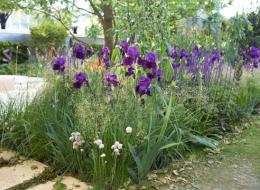
Irises are a charming plant that appeals to people of all taste preferences. Their popularity is also due to their unpretentiousness, since they do not require special care. This is one of the most favorite flowers among gardeners.
Content:
General principles of planting irises
To get a good result, it is important to understand how plant correctly irises. Only the most general information will be needed. Firstly, this plant is classified as a perennial. When planting them in open ground, there is no need to worry about even harsh winters. Irises are very resistant to cold weather.
We are interested in the so-called types of irises planted in gardens. According to the shoots, they are usually divided into two categories. We are talking about plants with vegetative and generative methods of reproduction:
- The former tend to place their rhizomes underground. They are characterized by annual links. It is from them that later, in the spring, leaves will appear like a fan.
- Generative shoots are characterized by the appearance of flower stalks. Each of them will have flowers: eight or (much less often) eleven. It all depends on the specific variety we choose. The roots of this plant are characterized by a fibrous type. Moreover, their shape is cord-like or thread-like.
Propagation of irises
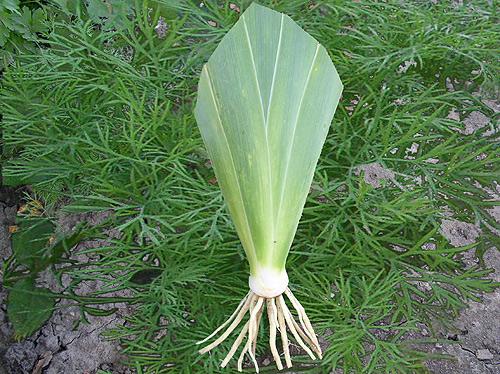
When learning how to plant irises, it is important to understand the principle of their reproduction.There are two of them: the principle of dividing rhizomes or vegetative; the second type is the use of seeds. Typically, propagation by seeds is used when it comes to their hybridization. Iris bushes planted from seeds will only be able to bloom after 2-3 years. At vegetative propagation color can be expected from the first year.
If we are talking about the propagation and cultivation of both varietal and wild specimens, then the vegetative method is ideal.
Vegetative method of propagation
After dividing the iris rhizomes, only well-developed, large bushes are taken. After digging, they should be thoroughly shaken off the soil. You can divide the rhizome in any way: with a shovel, a knife, and even break it with your hands.
It is important that each separated part has a leaf bunch. In this case, the rhizome is one (preferably two) annual link. The old links are not needed, and therefore are removed. The roots need to be cut by a third. The same goes for leaves, only they should be cut in half.
It is important to remember that dry and/or diseased leaves must be removed. It is also necessary to check the rhizomes. There may also be places that are damaged or rotten. They are best cut with a knife.
A necessary step in preparing the rhizome is disinfection. For this purpose, prepare a weak solution of potassium permanganate, into which the rhizome is dipped for 15 or 20 minutes. After this procedure, they need to be dried under the sun.
You also need to take care of the cuts. They are coated with a special mixture (sulfur and coal in a 1:1 ratio). Such a treated seedling will take root well and grow intensively.
Propagation of irises by sprouts
Having waited until flowering will come, using a prepared knife, we cut off the sprouts from the plant (we will call it the mother plant), only so that there are no buds. But you need to grab a piece of tissue from the rhizome. Such sprouts are planted under the shade, that is, the greenhouse should be cold. If necessary, you can spray.
The shoots take root within 2-3 weeks. This method is one of the best. Firstly, it is used to determine the variety; secondly, the mother plant does not receive damage; thirdly, about 90% of the cuttings take root.
Planting irises

Ending flowering period tells us that irises can begin to be replanted. This is the first period for transplantation. The second is the end of the growing season. After all, this time is characterized by the resumption of growth of both roots and leaves. This is a moment not to be missed. After all, if you replant later, the plants will die due to the fact that they will not have the opportunity to take root.
Flower growers consider the end of August - beginning of September to be the most optimal time for planting irises. It happens that planting material was obtained after this period.
In such cases, it is recommended to plant rhizomes in pots. The temperature should be 7 or 8 degrees. We plant them in open ground in the spring. If the seedlings were planted at the right time, then you should expect color in the spring. The peak of flowering of the plant (and its development in general) should be expected from the second and/or third year after planting.
An important stage in our study of how to plant irises is preparation. landing sites. We form holes, in the center of which small humps are formed. They are very important, since it is on them that we will later place the rhizomes. We very delicately spread the branches of the rhizomes along the perimeter of the hole.
Iris rhizomes are planted in holes, the depth of which should not exceed 3 cm. In order for the plants to grow well, a distance of half a meter must be maintained between them. Don't forget to water if necessary.
There are several answers to the question of how to plant irises. And all of them are very simple, which allows people who do not have specific skills in floriculture to grow these flowers.
All the subtleties of planting irises on video:
Interesting information about the vegetable garden

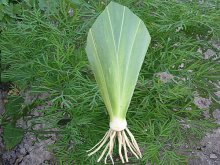
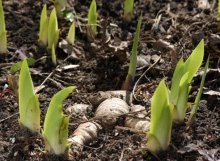


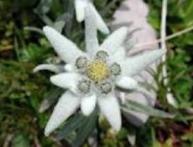
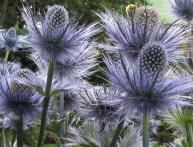




Comments
It is especially important to observe the temperature regime so that they do not freeze. If frost is still possible, it is better not to plant irises.
The first flowers planted on my site were low-growing irises. They are unpretentious and take root well. They are easy to care for and don’t require a lot of work. Last year I planted overgrown rhizomes in the simplest way: I broke them with my hands.